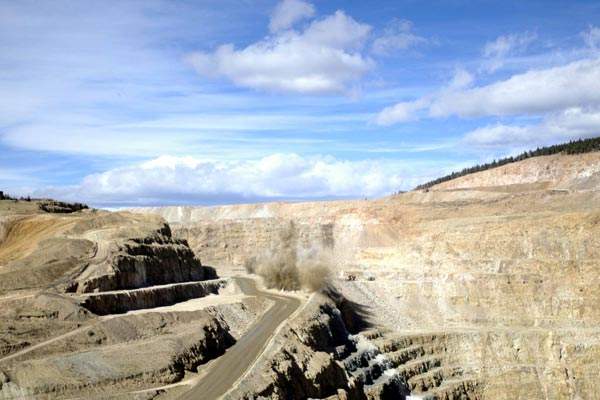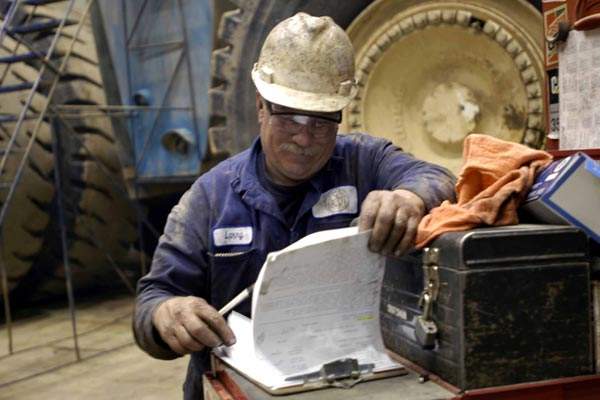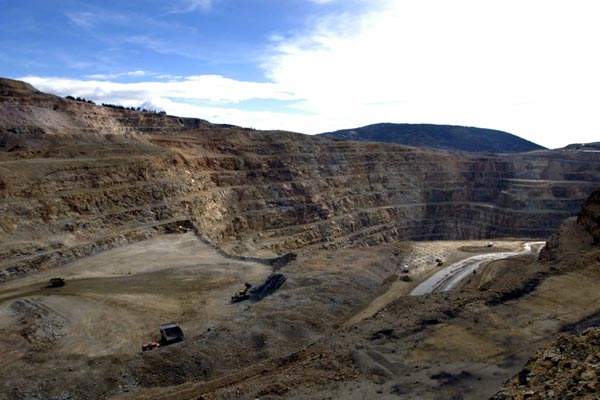The Cripple Creek and Victor gold mine (CC&V) lies southwest of Colorado Springs in the US state of Colorado. For many years the Cripple Creek Mining District was a series of underground mines. Following the start in 1994 of the CC&V Cresson Project today it is a low-grade, open-pit operation.
In March 1999 AngloGold Ashanti acquired the Pikes Peak Mining Company, and interests in the Cripple Creek & Victor Gold Mining Company (CC&V) and the Jerritt Canyon Joint Venture. The stake in the Jerritt Canyon Joint Venture was sold to Queenstake in mid-2003.
Up until mid-2008 the CC&V mine was a joint venture two-thirds owned by AngloGold Ashanti with Golden Cycle Gold Corporation owning the balance. In mid-2008 AngloGold completed a full acquisition of Golden Cycle which resulted in its taking 100% ownership of the CC&V mine.
Geology and reserves
The Cripple Creek mining district is centred on an intensely altered alkaline, tertiary-aged, diatreme-volcanic, intrusive complex, approximately circular in shape, covering 18.4km2, and surrounded by Precambrian rocks. The rocks consist of biotite gneiss, granodiorite, quartz monzonite and granite.
The intersection of these four units and regional tectonic events formed an area of regional dilation which subsequently localised the formation of the tertiary-aged volcanic complex.
Higher-grade pods of mineralisation occur at structural intersections and/or as sheeted vein zones along zones of strike deflection. High-grade gold mineralisation is associated with K-feldspar + pyrite +/- carbonate alteration and occurs adjacent to the major structural and intrusive dyke zones. The broader zones of disseminated mineralisation occur primarily as micro-fracture halos around the stronger alteration zones in the more permeable Cripple Creek Breccia wall rocks.
The average depth of oxidation is 120m and is also developed along major structural zones to even greater depths. Individual orebodies can be tabular, pipe-like, irregular or massive. Individual gold particles are generally less than 20 microns in size and occur as broad zones of low-grade gold-pyrite mineralisation or as fracture zones containing high-grade gold-silver tellurides. Gold occurs within hydrous iron and manganese oxides and as gold-silver tellurides. Silver is present but is economically unimportant. Gold mineralisation can be encapsulated by iron and manganese oxides, pyrite, K-feldspar alteration and quartz.
Proven ore reserves as at December 2007 were 118,904t at a grade of 0.028. Total mineral resources (measured, indicated and inferred) were 494,124t. Ore reserves as of December 2009 are estimated at 1.4Mt.
Mining and processing
Up until the 1960s The Cripple Creek Mining District was mined initially by multiple underground operations until the 1960s, after which mining activities ceased for a period. Small scale surface mining started in the 1970s until the start of large-scale surface mining in 1991, leading eventually to the start in 1994 of the CC&V Cresson Project. Today, CC&V is a low-grade, open-pit operation.
Ore processing
The ore is treated using a valley-type, heap-leach process with activated carbon used to recover the gold. The resulting doré buttons are shipped to a refinery for final processing.
Mine life extension
In 2008, the State of Colorado and Teller County approved a mine-life extension (MLE1) project for the mine. MLE1 will provide four years of additional production capacity. Construction on MLE1 project started in 2009. The project will extend the mine life until 2016.
CC&V completed engineering analysis for a second mine-life extension project called MLE2 in 2010. The new project involves milling of higher grade ore and heap leaching of lower grade ore in a new leach facility. MLE2 is expected to extend life of the mine to 2025 and beyond.
Production and costs
Production at CC&V increased in 2010 by 7% to 233,000oz from 218,000oz in 2009. A total of 20.7Mt was placed on the heap-leach pad in 2010.
There was a 31% increase in cash costs for 2010 to $493/oz from $376/oz in 2009 due to higher commodity prices, particularly diesel fuel, and increased royalty costs. A production milestone of 4Moz was achieved at the mine in August 2011.
Production is expected to increase to 300,000-314,000oz, at a cash cost ranging between $541/oz and $561/oz, following implementation of the MLE1 project.





